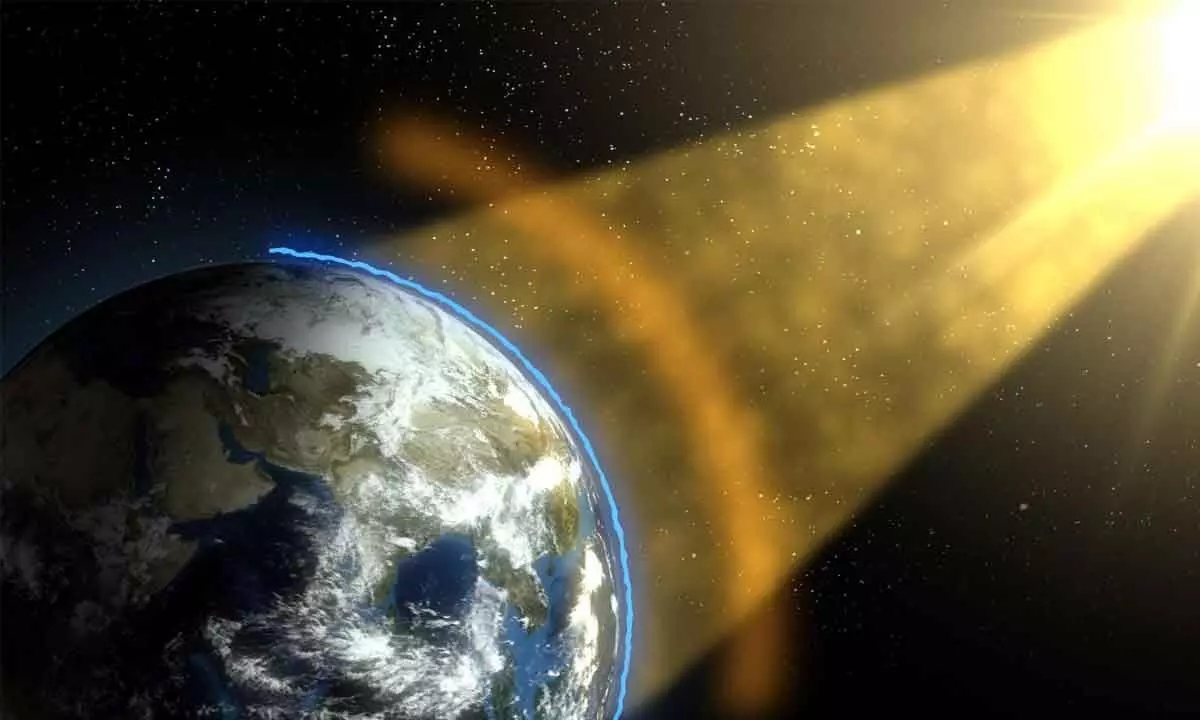Brain-burned? Scientists seek to block sun rays

Latest reports emanating from the White House suggest that the Biden administration is open to studying how to block sunlight to save the Earth from climate change
Latest reports emanating from the White House suggest that the Biden administration is open to studying how to block sunlight to save the Earth from climate change. The White House Office of Science and Technology Policy released a federally mandated report on solar geoengineering.
The report says that a designated team has been researching methods to stop the sun’s rays from accelerating global warming, the White House web site says. This is not just an idea being tossed up for discussions on the possibilities. “These unknowns, and the ever-evolving understanding of complex Earth systems, provide a compelling case for research to better understand both the potential benefits and risks,” the report says. This discussion has been going on for some years now. But, it never did come up for open discussion among the general public. The report was produced to fulfil a congressional mandate included in the Consolidated Appropriations Act passed in 2022, which asked the White House to develop a “research governance framework to provide guidance on transparency, engagement, and risk management for publicly funded work in solar geoengineering research,” according to the US media.
The indication is that the White House is all set to plunge into this exploration. The report says that the Biden administration is looking into “stratospheric aerosol injection (SAI) and marine cloud brightening.” Additionally, the paper mentions there is research in “cirrus cloud thinning.” Research has proved that large volcanic eruptions are able to send gases high in the atmosphere. These gases (mostly sulfur) form particles called aerosols that can travel worldwide, reducing the amount of sunlight that gets to the Earth’s surface. This happened in June of 1991 when Mt Pinatubo erupted. The climate cooled about 0.3℃ (0.5°F) for a couple of years. Researchers are looking at ways to engineer a similar effect — shading the planet and helping to cool our climate.
Blocking some solar radiation from getting to Earth could involve sending gases or particles into the atmosphere like volcanoes do. It could also include methods like making clouds or the Earth’s surface brighter so that they reflect more sunlight back out into space. Methods like these could help slow climate change. On planets where most of the energy from the Sun is reflected back out into space, the albedo (fraction of light that a surface reflects) is close to 1.0 (1.0 means that all of the sunlight is reflected). On planets where most of the energy from the Sun is absorbed, albedo is low, close to zero (zero means that none of the sunlight is reflected). Earth’s albedo is 0.3, which means that about a third of the energy that gets to Earth from the Sun is reflected back out to space. Researchers are looking for ways to increase the albedo of Earth, because if less solar energy is absorbed by the planet, then the surface of the Earth will cool. This concept is called solar radiation management.
Creating brighter clouds and increase the time they stay in the sky and (They are focusing on clouds over the ocean, where albedo is particularly low, in hopes of increasing the albedo, either in a region of the ocean or worldwide) adding aerosols to the stratosphere are two of the methods being discussed now. Well, first we tampered with Earth and now we seek to tamper with the Sun. This is called a Trisanku Swarga!














